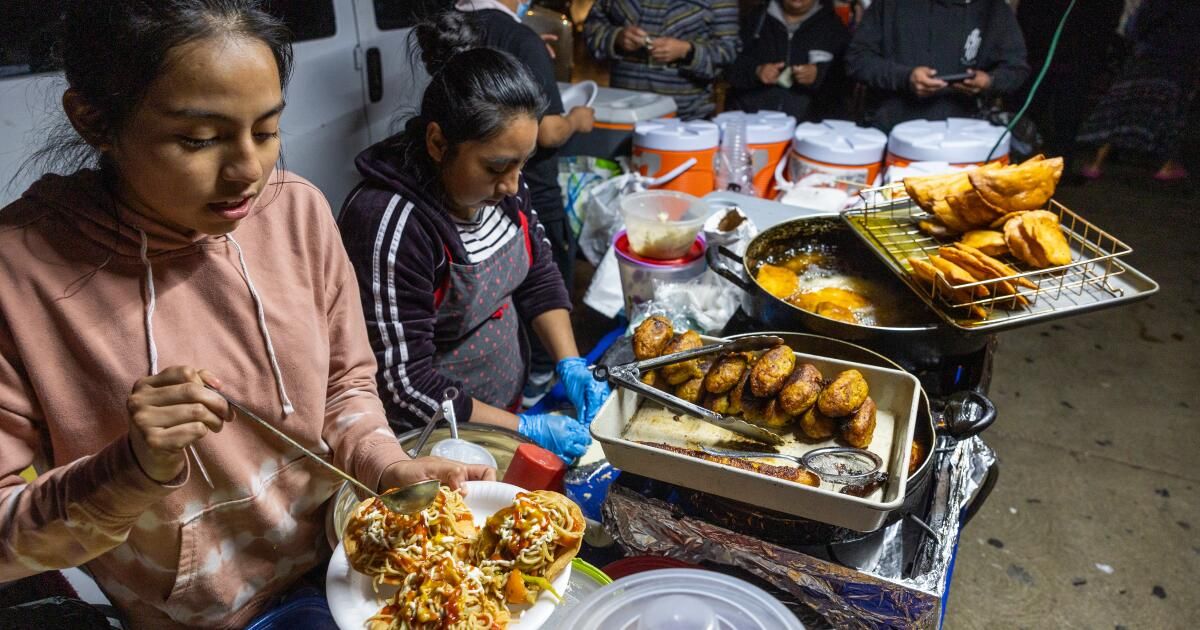Every morning, Julissa Corado rises with the sun to prepare the day's products. At noon, she and her mother load their white pickup truck with pots full of soup, orange buckets from Home Depot and a cast-iron griddle for heating tortillas.
Then, they head to a corner of Los Angeles that reminds them of their homeland: the intersection of South Bonnie Brae Street and 6th Street, the Westlake Guatemalan Night Market.
The market, a cultural hotspot for Guatemalans in Los Angeles, comes to life every night along the sidewalk, where street vendors set up their stalls with pop-up tents and wire shopping carts. Although some vendors are still struggling to obtain permits, market regulars say steps taken by state and local authorities to allow mobile food vendors have helped build the community.
Sandra Aguilar and Christian González, from Xela Tacos, prepare garnachas on a makeshift grill set up on the sidewalk next to the businesses at the Guatemala Night Market.
As customers pass by, they are greeted by a chorus of vendors whose offerings (a variety of native Guatemalan dishes) roll off their tongues: “chicken pepián, pata broth, chuchitos, tamales, rellenitos de plantain, garnachas.” This is just to name a few.
For a moment, vendors and customers can imagine themselves back in their homes in the municipalities of Quetzaltenango, Flores or Mazatenango. They see the Westlake Market as a place they have created for themselves in Los Angeles, which is home to the largest number of Guatemalan expats of any city.
Corado has worked at the booth for four years while being a mother to her young son, Nick. Adjusting to life in Los Angeles has been “strange,” Corado said, because it is markedly different from Santa Elena, the city she considered home in Guatemala. But the concern disappears when she is in the market.
“You feel like you're in your homeland because you are,” said Corado, 25, as he rolled a ball of fresh dough in his hands. “There is not much difference”.
Dishes at the market range from a cup of champurrado for $3 to a plate of roast beef with rice and beans for $11. Cash only. Any food that is not sold is often shared among vendors, according to Tina Tunay, who runs her stall with her daughter Yesenia and her husband Diego.
Unlike Mexican tamales cooked in corn husks, the Guatemalan version of Tunay is larger, wrapped in banana leaves, and softer to eat. It also sells tostadas topped with chow mein, elote loco, and rellenitos (plantains stuffed with refried black beans).
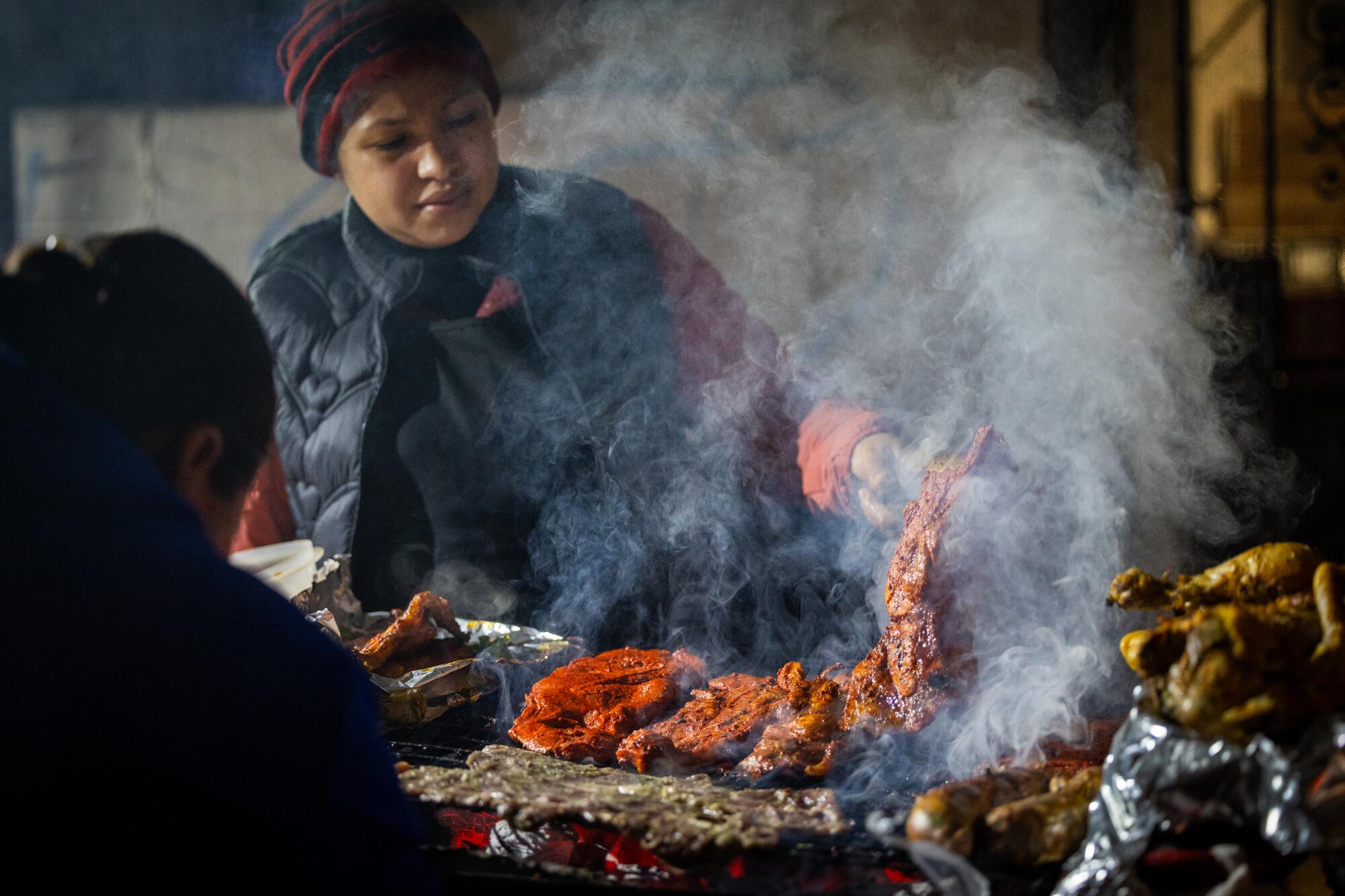
Smoke rises as Glenda Rojas, left, originally from Guatemala, and Maritza Ramírez, originally from Honduras, cook marinated chop and carne asada on a makeshift grill.
Tunay said that his family does not have the resources to preserve their assets for the next day. One solution could be to buy a food truck, but that can cost more than $25,000, almost two years of profits.
Last year, Tunay said he visited Sacramento with a group of street vendors to support Senate Bill 972, which makes it easier for vendors to obtain local health permits. Governor Gavin Newsom signed the bill into law in September 2022 and it went into effect in 2023.
Before street vending was decriminalized in Los Angeles, Tunay said the city used to come and throw away all its food. Nowadays, street vending has become easier, although Tunay said permits can still be a hassle, especially without a city-approved truck.
“For the moment we continue working like this,” Tunay said. “We have no choice.”
When the market began to form almost eight years ago, it looked nothing like the Little Guatemala it is today, according to Glenda Rojas, one of the many women who runs her own stall. Initially, there were four vendors at the intersection, Rojas said. Now there are about 45.
“They have adapted to this little piece of land and how to maintain it,” Rojas said of his fellow vendors, noting that he knows them all.
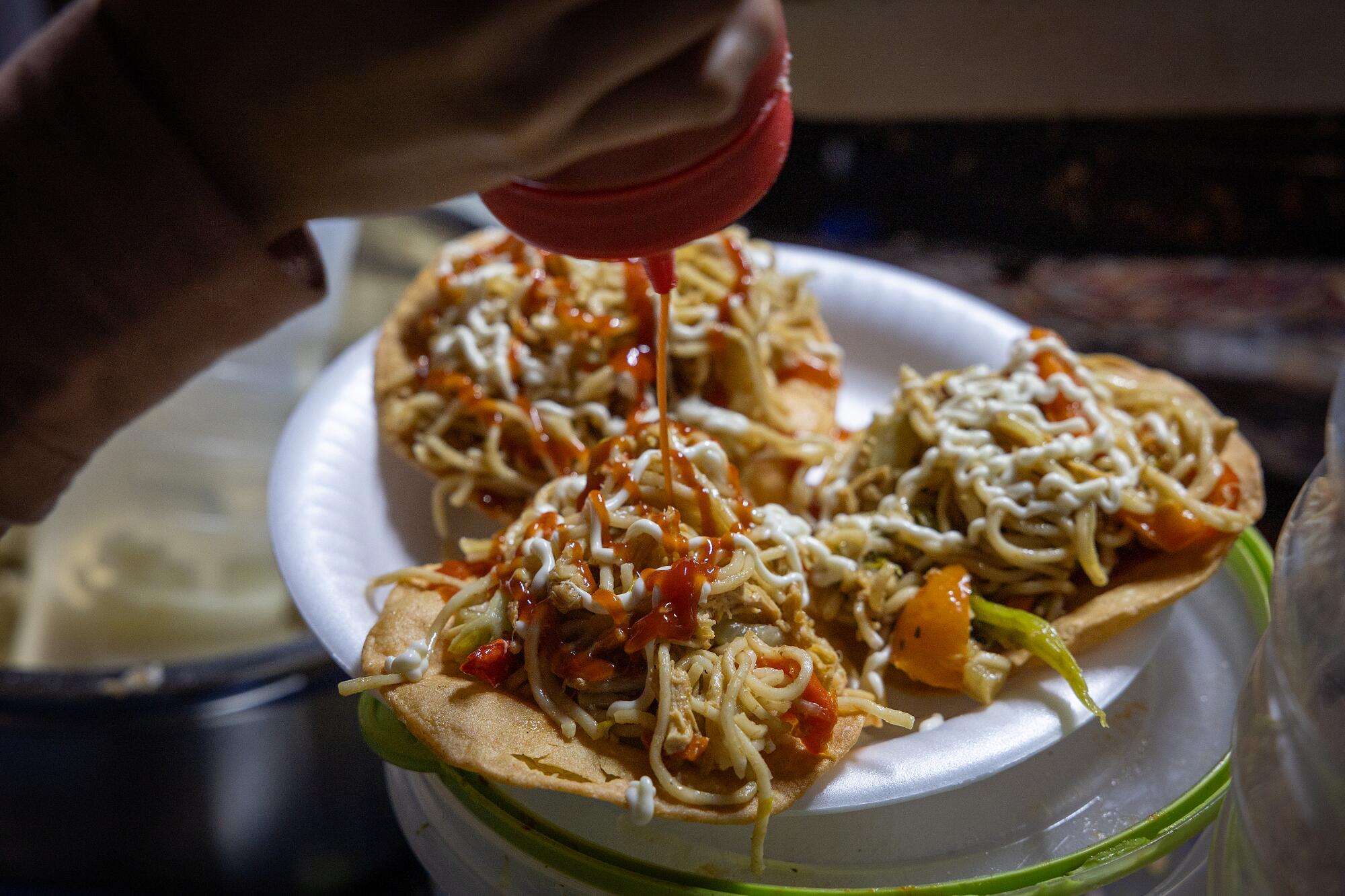
Yesenia Tunay pours mayonnaise and hot sauce on toast topped with chow mein at the Guatemala Night Market.
Vendors set their own hours and prices, but there is a code they respect among themselves: the division of territory on the sidewalk.
“Everyone has their designated space,” Rojas said in Spanish. “We cannot take a place that is not ours. “Everyone knows where to go.”
As a Westlake resident, he has no plans to take his business elsewhere.
“I got used to this,” Rojas said. “I didn't go anywhere else, so we'll stay here. “Here we all form a community.”
And he added: “I have visited other states and nothing compares to this place.”
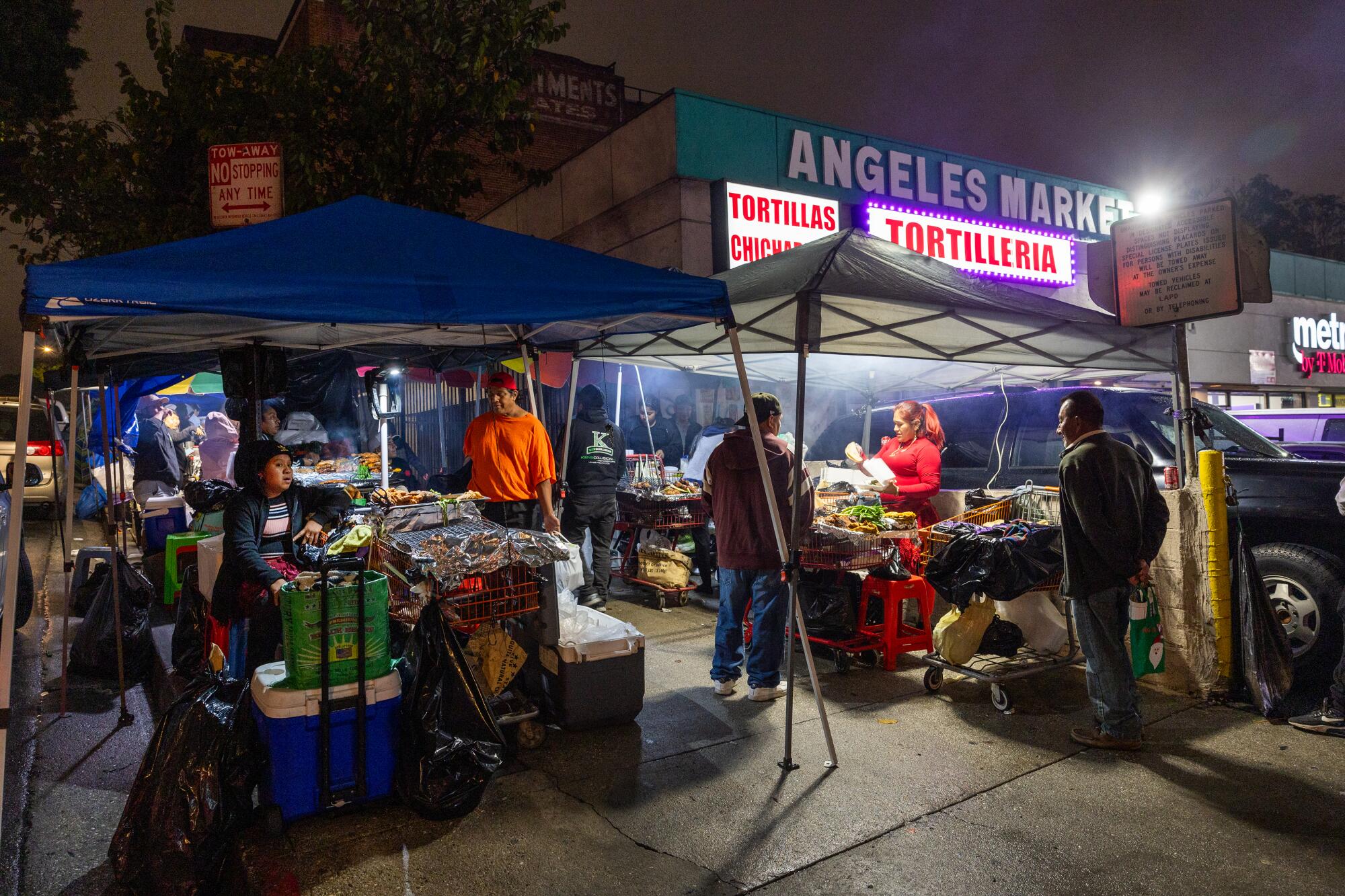
Customers wait to order and receive food at the Guatemala Night Market.
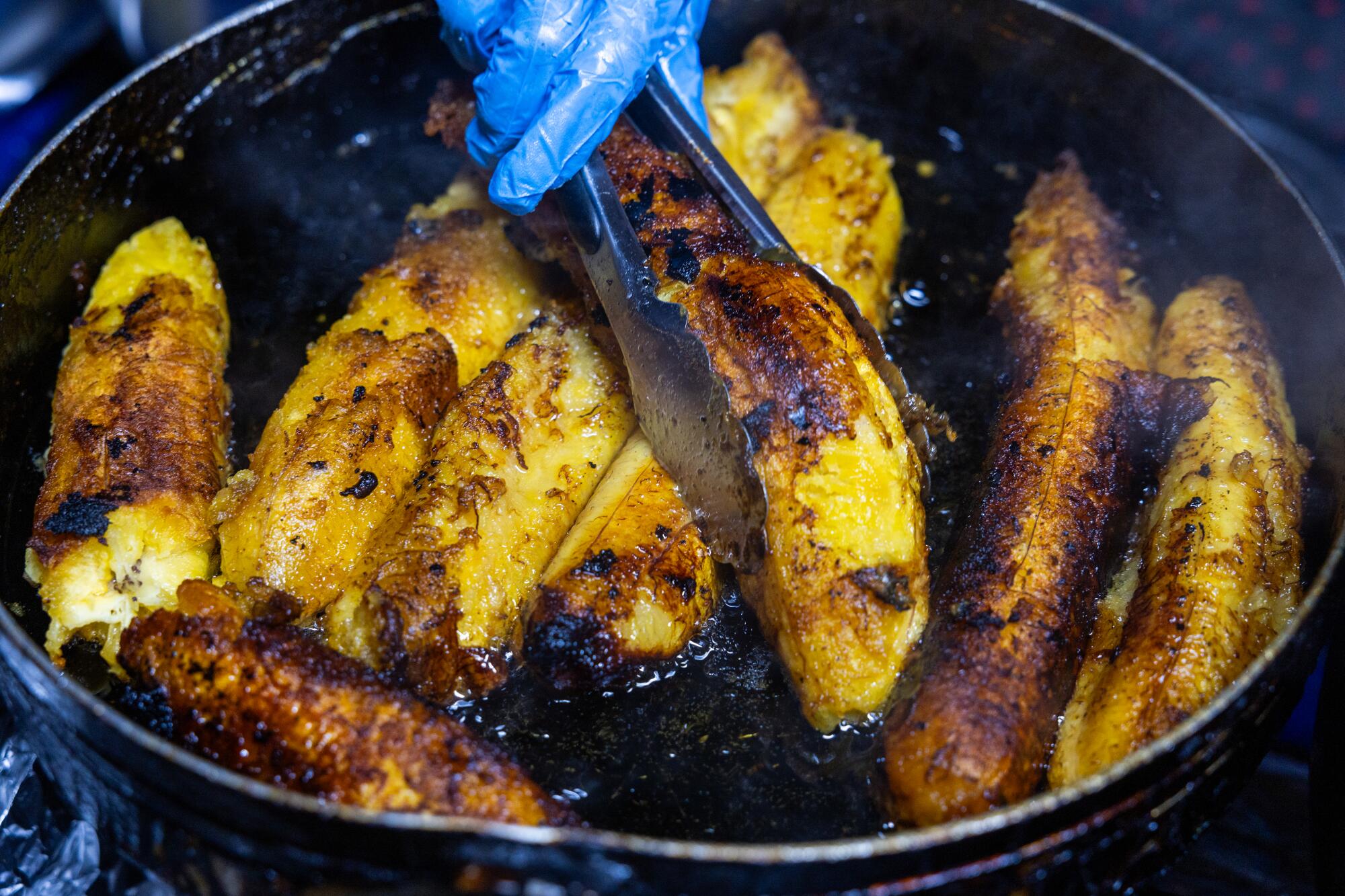
Tina Tunay cooks “fried plantains” on a makeshift grill set up on the sidewalk of the Guatemala Night Market.
María Hernández, 40, who sells cakes south of the intersection, said the need for more space can cause tension. She showed surveillance footage of a fight that broke out a month ago, although most vendors generally say people respect each other.
“We know we should be grateful,” Hernandez said. “We don't pay rent, which helps. Right now, from my point of view, everything seems fine. I can make native dishes from my country. The only problem is when people arrive to create more violence.”
Hernandez, who has lived in Los Angeles for 18 years, continues to run his business since “need” need, he said.
Almost everyone who frequents the market is chapines, a popular colloquialism used to refer to someone of Guatemalan descent. Some vendors sport T-shirts decorated with the outline of the Guatemalan border or wear clothing woven with the colorful patterns of Mayan textiles.
The resplendent quetzal, Guatemala's national bird, is seen on caps, soccer jerseys or sweaters, which are adorned with the chapinismos, “Qué Onda Vos?” or “Púchica!”
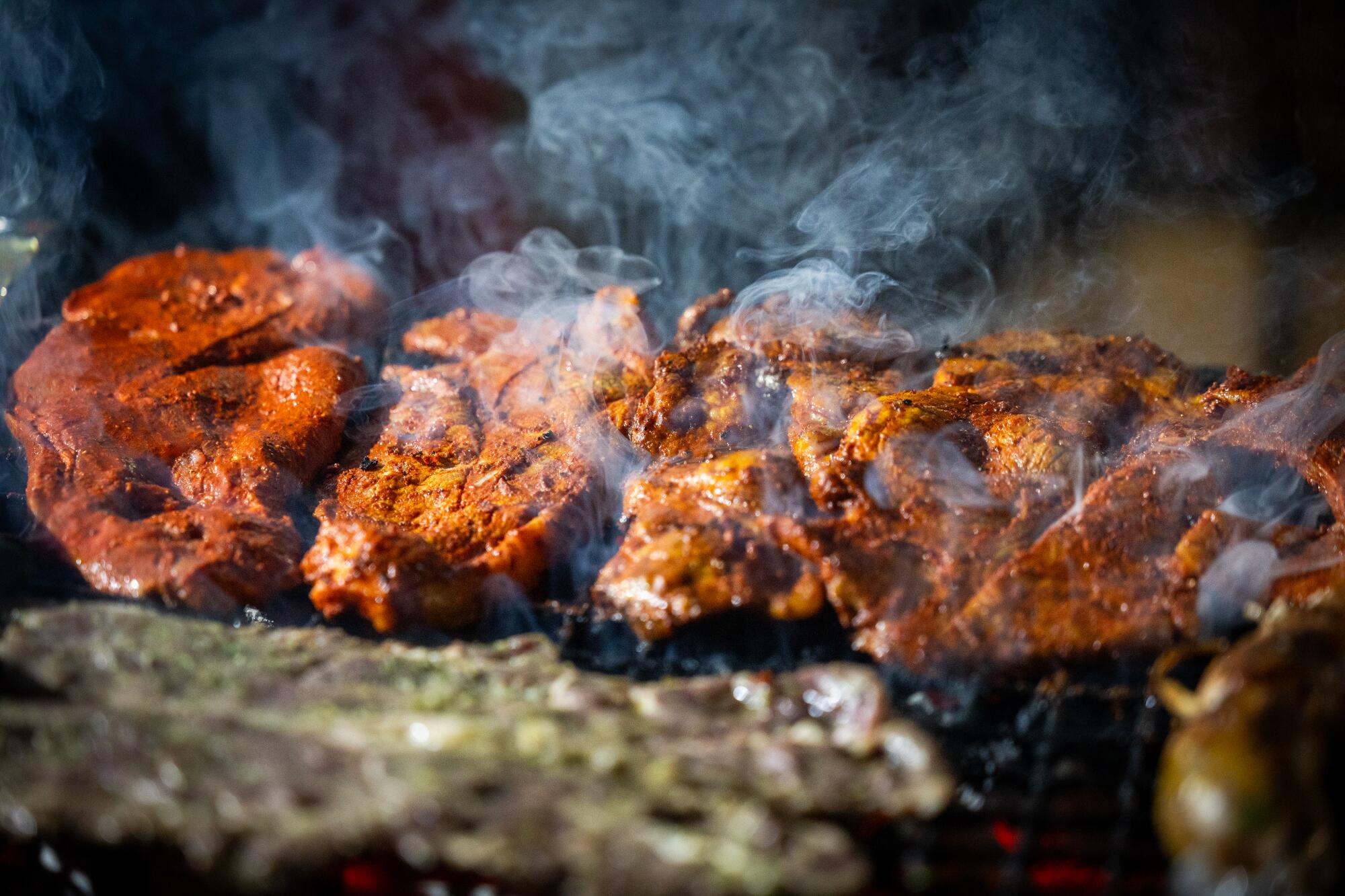
Marinated chop cooked on an improvised grill set up on the sidewalk of the Guatemala Night Market.
On a recent weekday, one of the only people who were not Guatemalan was Maritza Ramírez from Honduras, who helps Rojas run her stall. As she flipped a piece of chuleta adobada (grilled pork chops marinated in a chili seasoning mix) on a makeshift grill, Ramírez explained that she has worked at the market every day since Rojas offered her a job.
“And now we have turned it into Chapina,” joked Lucrecia Batz, a native of the department of Suchitepéquez in Guatemala. Battz, who also works with Rojas, said she uses her earnings to pay rent and put her three children to school.
In addition to marinated chops, Rojas' stand sells envueltas (meat or vegetables wrapped in battered egg), fried mojarra fish, and fresh tortillas.
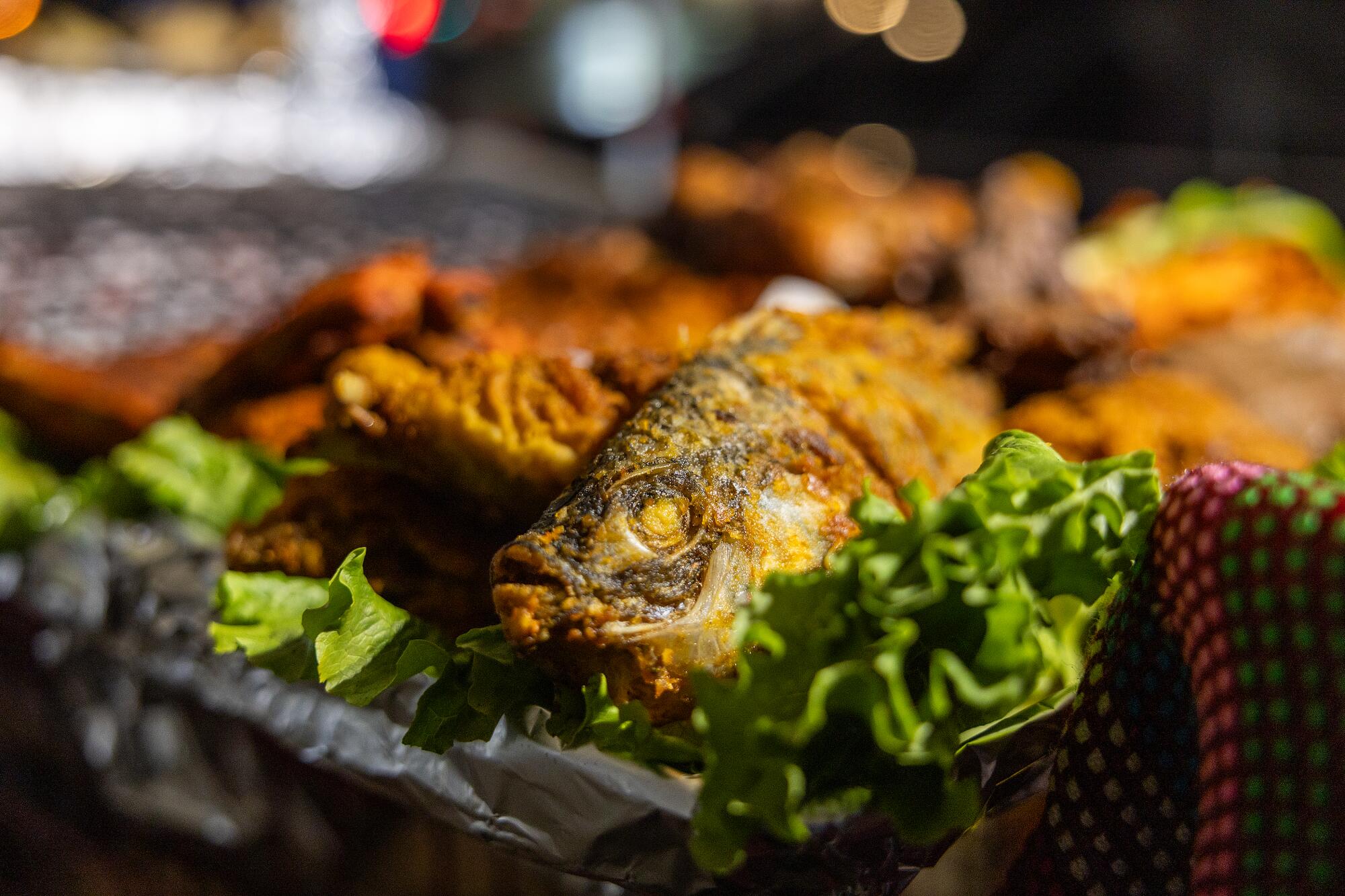
Fish or mojarra prepared on an improvised grill.
Waiting in line at the booth next to them were Reina Camil and her husband Tomás, who, over the past year, have repeatedly made the hour-long drive from Anaheim to visit the market.
“I like the native food and seeing everyone here. “I can have some fun and decompress after work,” said Reina, who carried her three-month-old son Tomás Jr. in a sling around her chest. Watching from inside the cloth, Tomás Jr. made no fuss as his mother picked up his order of mixed meats.
Susana Chun, another customer, said the market has become her go-to place to enjoy authentic food.
“If I want something from Guatemala,” he said, “I will come here.”
Corado and others say their clientele includes people from all over Latin America. Even Americans come to eat, except it can be “a little difficult to understand” their English, Corado said, laughing.
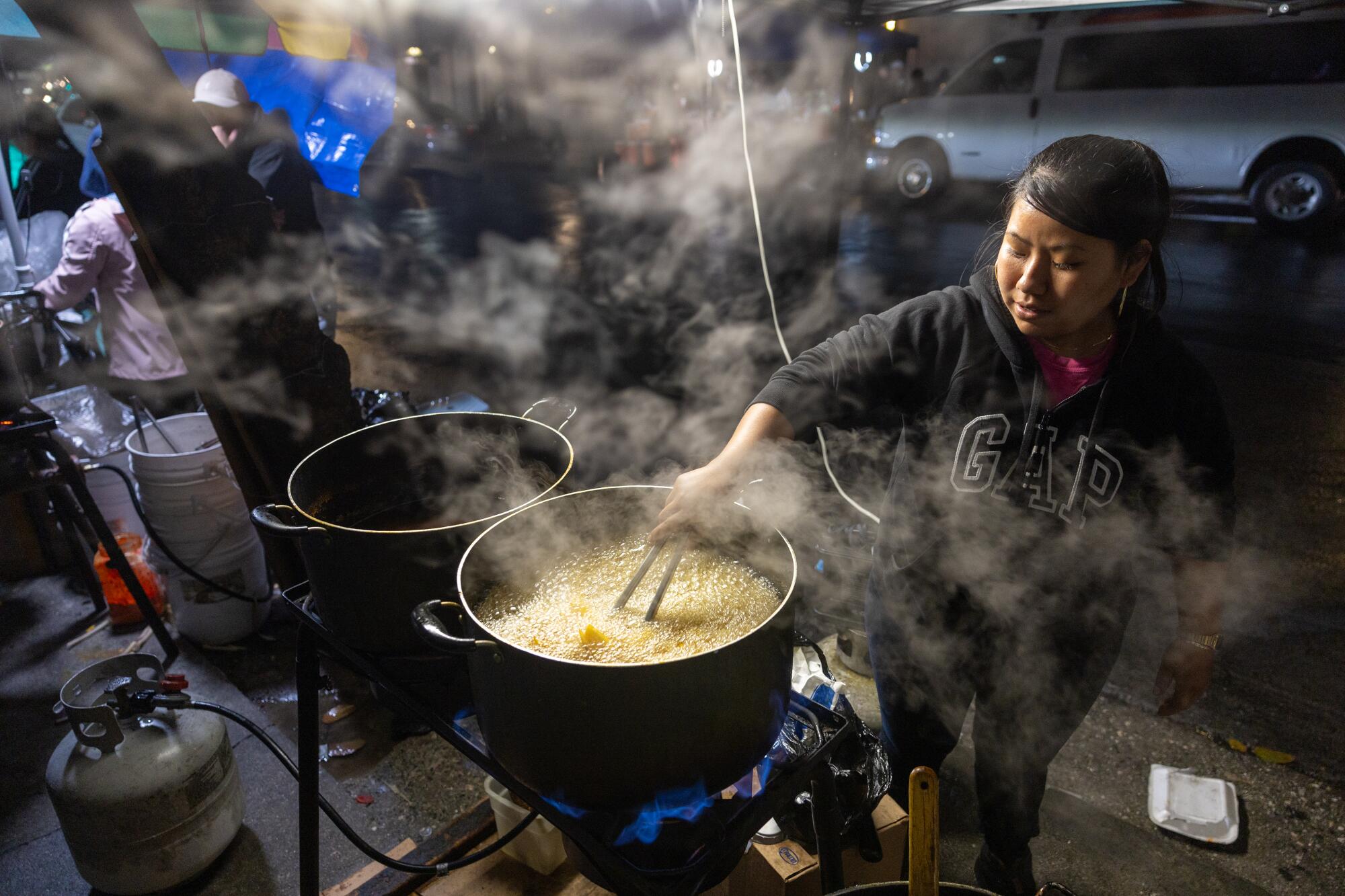
Ericka Guzmán fries French fries with “bijol” in an improvised fryer installed on the sidewalk.
Angélica Ortiz, 19, said she has also seen a wide variety of people come and go, even after Netflix featured the market in the documentary series “Street Food.” The food reminds her of her country, Ortiz said. Plus, she said it's better than the food you'll find at a restaurant and “cheaper.”
At 11 p.m., vendors pack up their tents, LED lights, rainbow-colored umbrellas and folding tables, turning Little Guatemala into an ordinary intersection. That is until they return the next day, ready to create a piece of home.

